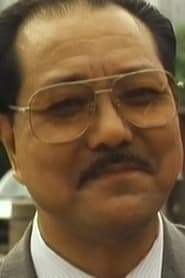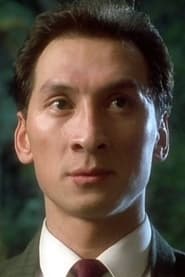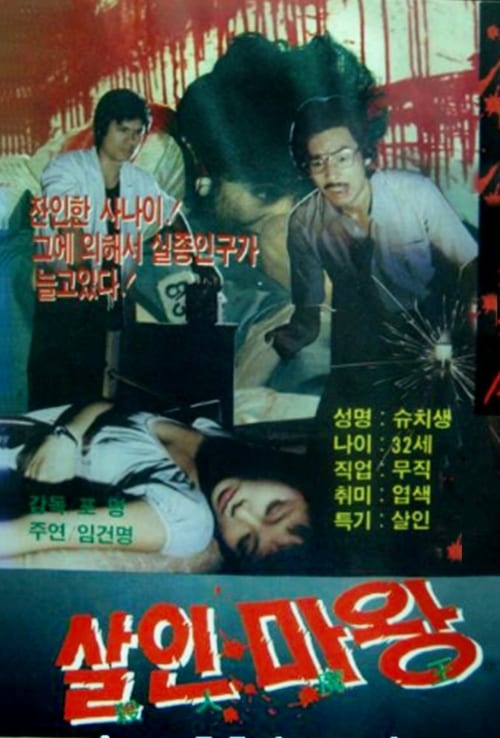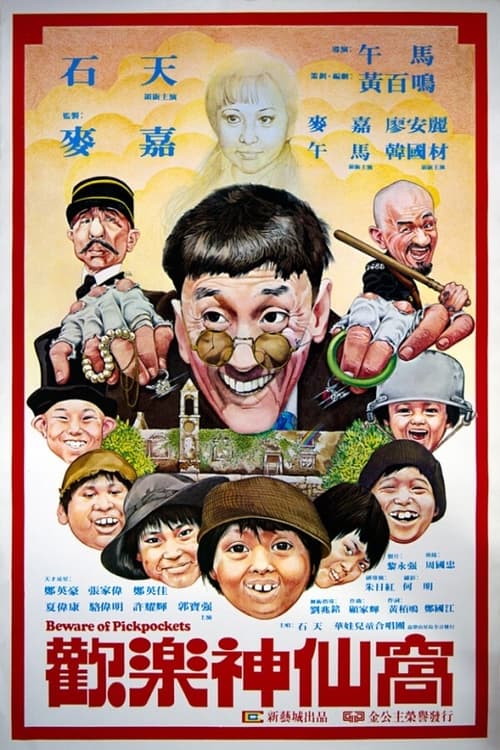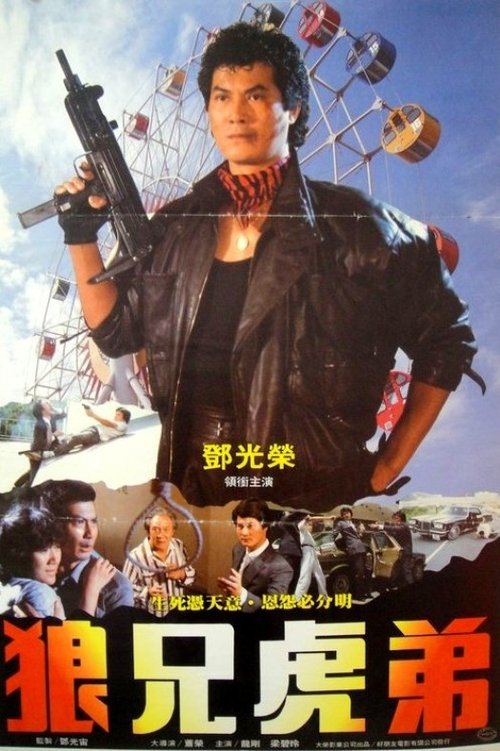
Ask Your Own Question
What is the plot?
The story of Without a Promised Land (1980) unfolds in the tense, claustrophobic confines of a Vietnamese refugee camp in Hong Kong, set against the grim reality of 1980, a time when thousands fled the aftermath of the Vietnam War. The film opens with the arrival of a weary group of refugees, their faces etched with exhaustion and uncertainty. Among them is Feng Hung, a man whose eyes reflect the pain of loss and the fragile hope for survival. Alongside him are Leon Lai and Wai Lam, fellow refugees who share the daily struggle of life in the camp, where overcrowding and harsh conditions breed despair.
The camp itself is a sprawling maze of makeshift shelters, a liminal space suspended between the horrors left behind in Vietnam and an uncertain future. The camera lingers on the cramped quarters, the faces of children playing amid debris, and the weary adults navigating the bureaucratic nightmare of resettlement. The refugees' personal belongings--tattered clothes, faded photographs, and worn letters--become silent witnesses to their lost identities and shattered pasts.
Feng Hung's first major confrontation occurs early in the camp when he challenges the camp guards over their brutal treatment of detainees. His voice rises in anger, "We are human beings, not prisoners to be broken!" he shouts, but the guards respond with cold indifference, tightening their grip on control. Though this clash does not end in death, it crystallizes the simmering tension between the refugees and the authorities, a tension that underlines the entire film.
As days pass, the refugees endure endless waits in processing centers where officials conduct interviews and sift through piles of paperwork. These sterile offices symbolize the gatekeepers of freedom, where hope is rationed and dreams are deferred. The refugees learn that resettlement is not guaranteed; some face indefinite detention or the terrifying prospect of being sent back. The film reveals this through hushed conversations and whispered fears: "They say some will never leave this place," a woman confides to Feng Hung, her voice trembling.
Personal backstories emerge in intimate moments. Feng Hung shares the trauma of losing his family to war, his eyes haunted as he recalls, "I left behind everything--my home, my wife, my child. Now, I have nothing but this waiting." Leon Lai and Wai Lam reveal their own scars, stories of survival that deepen the emotional weight of their predicament. These revelations are not just exposition but emotional anchors that humanize the refugees beyond their statistics.
The film's tension builds as the refugees uncover the systemic indifference of the authorities. The bureaucrats' detached demeanor and the endless delays become a form of psychological violence. At one point, a refugee reads aloud a letter of rejection, the words cutting through the camp like a blade: "Your application has been denied. You must remain here until further notice." The despair is palpable.
Throughout the film, the refugees' interactions with the outside world are fleeting and bittersweet. Scenes of Hong Kong's bustling streets contrast sharply with the camp's confinement, underscoring the refugees' isolation. The city's vibrant life seems a distant dream, as if a glass wall separates the refugees from normalcy.
The climax approaches as news arrives about resettlement decisions. The camp is electric with anticipation and dread. Some refugees receive approval to leave, their faces a mixture of joy and sorrow. Others face indefinite waiting, their hopes dashed. Emotional farewells unfold amid tears and embraces. Feng Hung, though approved for resettlement, hesitates, torn between the pain of leaving behind friends and the promise of a new life. "This is not a promised land," he murmurs, "but it is a chance."
No main character dies on screen, but the film's true deaths are psychological--the death of hope, identity, and the life once known. The refugees board buses and planes, their silhouettes fading into the distance, carrying with them the weight of loss and the fragile spark of survival.
The final scenes linger on empty camp grounds, the silence a stark contrast to the earlier chaos. The camera pans over abandoned shelters, a visual metaphor for displacement without resolution. The film closes not with triumphant arrival but with a somber acknowledgment: the promised land remains elusive, and the refugees' journey is far from over.
Without a Promised Land is a haunting portrayal of displacement, resilience, and the human cost of political indifference, told through the eyes of those caught in the limbo between past trauma and uncertain futures.
What is the ending?
In the ending of "Without a Promised Land," the main characters face the consequences of their struggles and decisions. The film concludes with a sense of unresolved tension, as the characters grapple with their identities and the harsh realities of their lives.
As the narrative unfolds, the final scenes depict the characters in a state of emotional turmoil. The protagonist, who has been on a quest for belonging and purpose, confronts the stark realities of their situation. The film closes with a poignant moment that encapsulates the themes of loss and the search for hope amidst despair.
The ending of "Without a Promised Land" begins with a somber atmosphere, as the protagonist stands at a crossroads, both literally and metaphorically. The sun sets in the background, casting long shadows that symbolize the weight of the choices made throughout the film. The protagonist, weary from their journey, reflects on the struggles faced and the relationships formed along the way.
In a pivotal scene, the protagonist encounters a former ally, who has also been deeply affected by the events that transpired. Their conversation is filled with unspoken regrets and a shared understanding of the sacrifices made. The emotional weight of their dialogue reveals the depth of their connection, as they both grapple with feelings of betrayal and loss. The camera lingers on their expressions, capturing the pain and longing for a different outcome.
As the scene shifts, we see the antagonist, who has been a significant force in the protagonist's life, facing the repercussions of their actions. The antagonist's isolation is palpable, as they confront the emptiness that comes from their relentless pursuit of power. This moment serves as a stark contrast to the protagonist's journey, highlighting the different paths taken and the emotional toll of their choices.
The film then transitions to a gathering of the community, where the characters come together to confront their shared struggles. The atmosphere is charged with tension, as unresolved conflicts bubble to the surface. The protagonist stands at the center, embodying the hope for reconciliation and understanding. However, the gathering quickly devolves into chaos, reflecting the deep-seated divisions that have emerged.
In the final moments, the protagonist makes a heartfelt plea for unity, urging the community to look beyond their differences. The camera captures the raw emotion in their eyes, revealing a flicker of hope amidst the despair. Yet, as the scene unfolds, it becomes clear that not everyone is willing to listen. The film ends on a note of ambiguity, with the protagonist walking away from the gathering, leaving the audience to ponder the future of the community and the characters involved.
The fate of each main character is left unresolved. The protagonist, though filled with determination, faces an uncertain path ahead. The former ally, while still connected to the protagonist, is left grappling with their own demons. The antagonist, isolated and alone, is left to confront the consequences of their actions without the support of those they once sought to control. The film closes with a lingering sense of hope intertwined with the harsh realities of life, leaving the audience to reflect on the complexities of human relationships and the quest for belonging.
Is there a post-credit scene?
The movie "Without a Promised Land," produced in 1980, does not contain a post-credit scene. The film concludes its narrative without any additional scenes or content after the credits roll. The focus remains on the story and themes presented throughout the film, which centers on the struggles and experiences of its characters in the context of their search for identity and belonging.
What role does the setting play in shaping the characters' experiences?
The setting, primarily the war-torn landscapes of Palestine, serves as a constant reminder of the characters' struggles. The stark contrasts between the beauty of the land and the devastation of conflict create a backdrop that amplifies the characters' emotional states. The physical environment reflects their internal turmoil, with scenes of lush olive groves juxtaposed against military checkpoints and ruins, symbolizing both hope and despair.
What motivates the main character's journey throughout the film?
The main character, a young Palestinian man named Khalil, is driven by a deep sense of loss and a desire to reclaim his family's land, which has been taken from them. His journey is fueled by a mix of personal grief over the displacement of his family and a broader longing for justice and identity in a land that has become increasingly hostile.
How does Khalil's relationship with his family evolve during the film?
Khalil's relationship with his family is strained at the beginning of the film, as they are divided over how to respond to their situation. His father, who is more resigned to their fate, contrasts with Khalil's fiery determination. As the story progresses, Khalil's experiences in the struggle for their land bring the family closer together, culminating in a poignant moment of unity as they confront their shared history and aspirations.
How do the interactions between Khalil and the soldiers reflect the broader conflict?
Khalil's encounters with soldiers are fraught with tension and fear, illustrating the power dynamics at play. These interactions reveal his internal conflict; he oscillates between anger and a desperate need for understanding. The soldiers, often portrayed as faceless enforcers of oppression, serve as a constant reminder of the systemic violence that Khalil and his community face, deepening his resolve to fight for his homeland.
What significant events lead to Khalil's transformation throughout the film?
Khalil undergoes a profound transformation triggered by a series of significant events, including witnessing the destruction of his childhood home and the loss of friends to violence. These experiences harden his resolve and shift his perspective from one of personal loss to a broader commitment to his people's struggle. His journey through despair, anger, and ultimately a sense of purpose marks a critical evolution in his character.
Is this family friendly?
"Without a Promised Land," produced in 1980, is a film that deals with complex themes surrounding the Palestinian experience and the struggles faced by individuals in a conflict-ridden environment. While the film is significant in its portrayal of social and political issues, it may not be considered family-friendly for younger audiences or sensitive viewers due to several potentially objectionable aspects:
-
Violence and Conflict: The film depicts scenes of violence and conflict, which may be distressing for children. This includes confrontations between different groups and the impact of war on civilians.
-
Emotional Trauma: Characters experience significant emotional distress, including loss, grief, and despair, which may be heavy for younger viewers to process.
-
Political Tension: The film addresses complex political themes and the harsh realities of life in a war zone, which may be difficult for children to understand fully.
-
Depictions of Suffering: There are scenes that illustrate the suffering of individuals and families affected by the conflict, which can be upsetting and evoke strong emotional responses.
-
Cultural and Historical Context: The film's exploration of cultural identity and historical grievances may be challenging for younger audiences to grasp, potentially leading to confusion or discomfort.
Overall, while the film is a poignant exploration of its themes, its content may not be suitable for children or those sensitive to depictions of violence and emotional turmoil.




